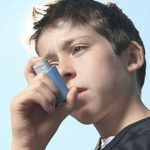
Elon Musk swears by the weight-loss drug Wegovy, and Kim Kardashian is rumored to have used it to shed 16 pounds in three weeks to squeeze into a vintage gown once worn by Marylin Monroe. But the intense public demand for Wegovy has triggered a shortage of the diabetes version of the injectable medication, known as Ozempic. That’s leaving patients with the blood sugar disease in a real bind. Made by Novo Nordisk, semaglutide (Ozempic) has been on the market since 2017 to help manage type 2 diabetes. But in June 2021, the U.S. Food and Drug Administration approved semaglutide to treat weight loss under the brand name Wegovy. Ever since Wegovy arrived on the market, Novo Nordisk has struggled to meet demand, experts said. Unfortunately, people who want to drop pounds and can’t find Wegovy are getting doctors to write them off-label prescriptions for Ozempic, eating into supplies of a drug that’s vital in the treatment of diabetes. “We’ve heard reports of people really struggling to fill their prescriptions,” said Dr. Robert Gabbay, chief science and medical officer for the American Diabetes Association. “I still see patients at the Joslin Diabetes Center, and I can tell you that some of my patients have said, oh, yeah, you know, I had to go to lots of different pharmacies to finally find it. It’s been a… read on > read on >


















